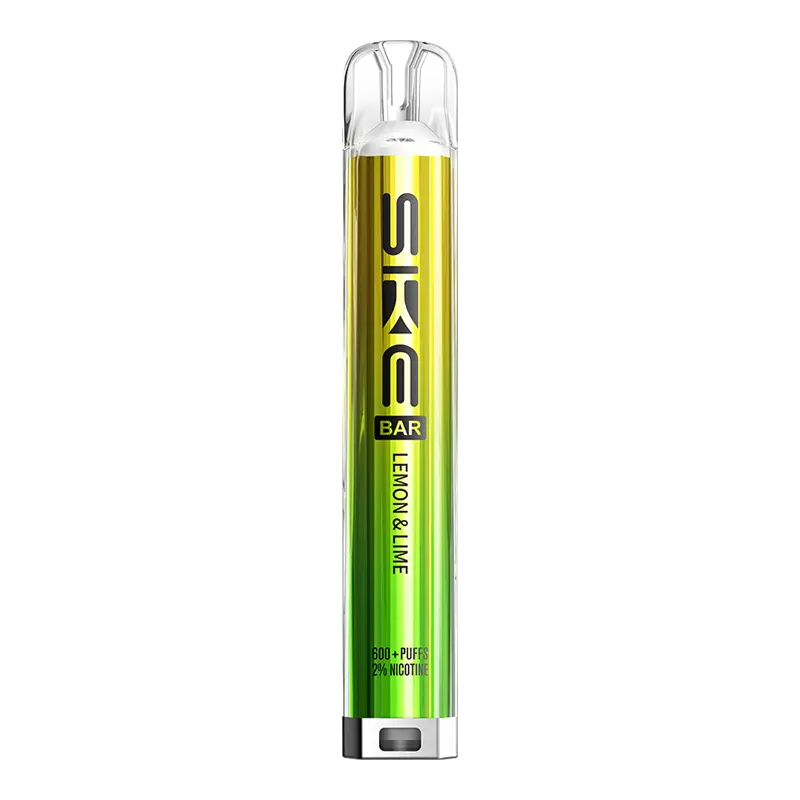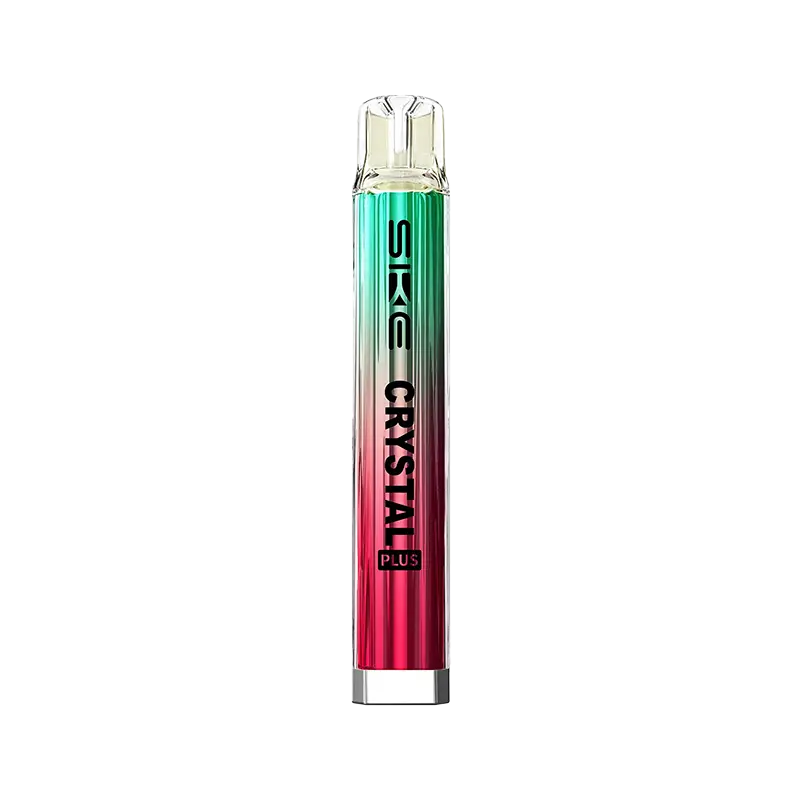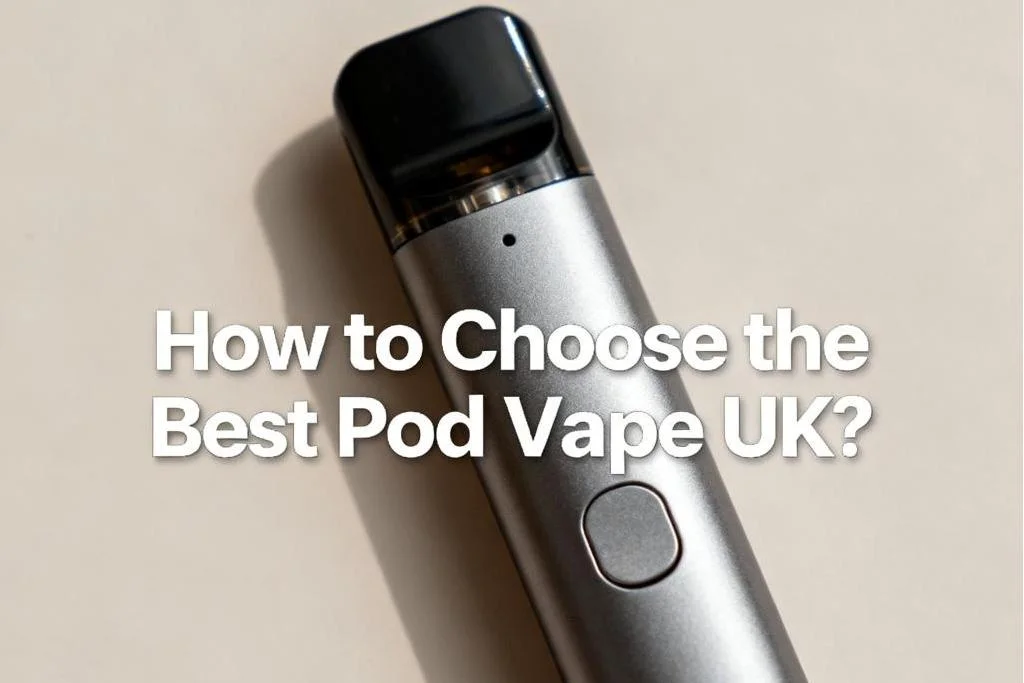Propylene Glycol vs Vegetable Glycerine: Vapes Differences
Vaping and e-cigarettes have exploded in popularity in recent years as an alternative to traditional smoking. At the heart of any vaping device is the e-liquid that creates the vapor. This vape "juice" mainly contains a mix of propylene glycol (PG) and vegetable glycerin (VG), which produce a vapor cloud when heated. So what exactly are PG and VG, and what sets them apart? This guide will compare propylene glycol vs. vegetable glycerin and break down their key differences.
Quick look:
| Comparison Table | Propylene Glycol (PG) | Vegetable Glycerin (VG) |
| Flavor Intensity | Carries more nuanced flavor notes | Mutes subtle flavor notes somewhat |
| Throat Hit | Provides a strong throat hit | Has a much milder throat hit |
| Vapor Production | Produces thinner vapor clouds | Outputs significantly denser, thicker vapor clouds |
| Viscosity | Has a thinner consistency | Is around 60% more viscous |
| Best Uses | Flavor chasing with 50% or higher ratios | Cloud chasing with 60% or higher ratios |

PG and VG Work as Critical Components in Vape Juices
PG and VG are critical components in vape juices and have a major influence on the vaping experience. These two base liquids allow for the production of vapor clouds when heated and aerosolized inside the vape device. Without PG or VG as the foundation, there would be no vapor at all.
Beyond enabling vapor formation, the ratio of PG to VG directly impacts key factors like throat hit, flavor intensity, and vapor density. PG carries flavors very well and provides a satisfying throat-hit sensation similar to smoking a cigarette. For vapers who prioritize rich, accurate flavor profiles, juices with a higher PG ratio in the 50-70% range are preferred. The thinner viscosity also allows efficient wicking for clean vapor production.
VG, on the other hand, is favored for its ability to create enormous, dense clouds of vapor. For vape trick enthusiasts who want to perform smoke rings, competitions, or other cloud-centered activities, very high VG ratios above 60% or even max VG blends are used. However, the tradeoff is that VG tends to mute more subtle flavor notes. Finding the right PG/VG balance means dialing in the ideal vape juice for your particular preferences and style of vaping.
Poor quality PG or VG, or improper ratios for a given device, can lead to issues like flooding, leaking, or lackluster flavor and vapor. But when high-grade PG and VG are blended at the right percentages for your needs, the difference in performance is substantial. For any vaper looking to customize and optimize their vaping experience rather than settling for generic off-the-shelf juices, understanding how to leverage PG and VG ratios to your advantage is extremely beneficial.
Before we have any further discussion, let’s get to know what are propylene glycol and vegetable glycerin.
%20and%20Vegetable%20Glycerin%20(VG)%22%7D)
What is Propylene Glycol?
Propylene glycol (PG) is an organic compound classified as a diol alcohol. It is a clear, thin liquid synthesized from propylene oxide. PG has become a common ingredient in many types of vape juice, particularly for its ability to carry flavor effectively.
When heated and aerosolized, PG creates a “throat hit” that users look for to simulate the feel of cigarette smoke in the back of the throat. This gives vaping a more satisfying, cigarette-like experience. PG is also less viscous than VG, giving it a thinner consistency that wicks well and creates a less dense vapor cloud.
PG ratios around 50-70% work well for delivering pure, intense flavor notes and a hearty throat hit. One downside is some research indicates PG can cause mild irradiation or dryness with prolonged vaping. Overall, PG brings excellent flavor and satisfaction to vape juices.
What is Vegetable Glycerin?
Vegetable glycerin (VG) is a clear, odorless liquid derived from plant oils like palm, soy, or coconut. Known for being smooth and slightly sweet, VG creates dense vapor clouds but also provides less throat hit than PG. The viscosity of VG is around 60% thicker than PG.
VG is favored for vapor production in trick-oriented vaping with an emphasis on big, thick clouds. Blends with higher VG ratios – 60% or above – excel at cloud chasing. The tradeoff is mutes flavor subtlety somewhat. Pure 100% VG liquids may feel too muted in flavor for some.
Overall, VG brings smooth plumes, a milder throat hit, and a sweeter profile. It excels at cloud chasing but higher ratios can limit flavor. It also seems to cause less dryness or irritation issues for longer-term vaping.
%20versus%20Vegetable%20Glycerin%20(VG)%22%7D)
Propylene Glycol vs Vegetable Glycerine
A. Flavor Delivery: The Battle of Nuances
When savoring your favorite e-juice, flavor intensity is paramount. So, which one reigns supreme in delivering those delectable notes?
- PG Takes the Lead: Thanks to its low viscosity and lack of inherent sweetness, PG excels at carrying complex and subtle flavors. If you're all about tasting every intricate note in your e-liquid, PG-based vape juices are your go-to.
- VG's Sweet Symphony: While VG doesn't carry flavors as sharply as PG, it adds a slight sweetness that can enhance certain profiles, especially dessert and fruit flavors. If you prefer a mellow and sweet undertone, VG won't disappoint.
B. Throat Hit: Seeking That Satisfying Kick
Remember the familiar sensation of traditional smoking? Achieving that perfect throat hit is crucial for many vapers transitioning from cigarettes.
- PG Delivers the Punch: PG is notorious for providing a pronounced throat hit, closely resembling the experience of smoking. It's ideal for those who crave that sharp sensation with every inhale.
- VG's Smooth Operator: Conversely, VG offers a much smoother and gentler throat hit. It's perfect for those who enjoy a more relaxed vaping experience.
C. Vapor Production: Chasing Clouds or Keeping it Subtle?
Whether you're a stealth vaper or a cloud enthusiast, the PG/VG ratio in your e-liquid significantly influences vapor production.
- VG Creates the Fog: VG is the undisputed champion of producing thick, dense vapor clouds. If you're into performing vape tricks or enjoy enveloping yourself in clouds, high-VG liquids are the way to go.
- PG Keeps it Discreet: For those who prefer a more subdued vaping session without drawing too much attention, PG-heavy blends produce less visible vapor, making them suitable for discreet vaping.
%20and%20Vegetable%20Glycerin%20(VG)%22%7D)
D. Viscosity and Device Compatibility: Finding the Perfect Match
Choosing the right consistency ensures optimal performance and longevity of your vaping device.
- PG's Thin Consistency: The thinner nature of PG makes it easy to wick, less likely to clog coils, and compatible with most standard vape devices.
- VG's Thick Profile: VG's thicker consistency requires vaping devices equipped with efficient wicking systems, such as sub-ohm tanks or rebuildable atomizers. While it may demand more power and frequent coil changes, the reward lies in those luscious clouds and smoother hits.
E. Allergies and Sensitivities: Vaping with Comfort
Your comfort is paramount when selecting an e-liquid base, especially if you have known sensitivities.
- PG Sensitivities: A small percentage of vapers may experience allergic reactions to PG, including sore throat, dry mouth, or skin irritation. If you notice such symptoms, consider switching to a higher VG blend.
- VG's Gentle Touch: VG is generally well-tolerated and hypoallergenic, making it a safer choice for those with PG sensitivities or those seeking a more natural alternative.
Experience Customization: Crafting Your Ideal Vape
Why settle for one when you can have the best of both worlds? Many vapers experiment with different PG/VG ratios to tailor their experience.
- Balanced Blends: A 50/50 mix offers a harmonious balance between flavor intensity and vapor production, providing a versatile vaping experience suitable for most devices.
- High VG Blends: Ratios like 70/30 or 80/20 in favor of VG cater to cloud chasers and those seeking smoother hits, albeit with a slight compromise on flavor sharpness.
- High PG Blends: Opting for a 70/30 or 80/20 PG/VG mix suits flavor purists and those desiring a strong throat hit, perfect for mimicking traditional smoking sensations.
%20and%20Vegetable%20Glycerin%20(VG)%20on%20flavor%20and%20vapor%22%7D)
The Verdict: PG vs. VG
Based on what we discussed above, we know that propylene glycol delivers pure flavor and satisfaction similar to smoking while vegetable glycerin provides enormous vapor density. Finding the right PG/VG balance depends on your vaping preferences:
- For flavor chasing, opt for PG-based juices with 50% or higher ratios
- For cloud chasing, get max VG juices with at least 60% VG
- For a balance, stick to 60PG / 40VG for the best of both
When selecting a vape juice, understanding the PG vs. VG differences is key. Mix and match to fine-tune the experience you want. Just be sure to choose high-quality, lab-tested juices from reputable brands like SKE Crystal Bar. Understanding PG and VG puts the power in your hands to customize the perfect vape.
TABLE OF CONTENTS
- PG and VG Work as Critical Components in Vape Juices
- What is Propylene Glycol?
- What is Vegetable Glycerin?
- Propylene Glycol vs Vegetable Glycerine
- A. Flavor Delivery: The Battle of Nuances
- B. Throat Hit: Seeking That Satisfying Kick
- C. Vapor Production: Chasing Clouds or Keeping it Subtle?
- D. Viscosity and Device Compatibility: Finding the Perfect Match
- E. Allergies and Sensitivities: Vaping with Comfort
- The Verdict: PG vs. VG






















